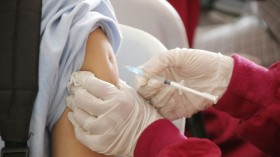A new computer program, which functions like airport security technology, may help doctors decide on appropriate stroke treatments for patients, according to a study published in the journal Neuroimage Clinical
The program assesses brain scans using pattern recognition software to predict which stroke victims might suffer potentially fatal side effects as a result of their treatment.
Stroke affects more than 15 million people worldwide each year, ischemic strokes being the most common. These occur when a clot cuts off the blood supply to the brain. The most effective stroke treatment, called intravenous thrombolysis, involves injecting a chemical into the blood vessels to break up the clot and restore blood flow.
This treatment can be dangerous as it thins the blood, causing bleeding in the skull. About 6 percent of its recipients experience harmful side effects, which are often fatal.
Researchers trained a computer program to recognize brain scan patterns that indicate the likelihood of brain-thinning or diffuse small-vessel narrowing in patients. The study's team assessed computerized tomography scans from 116 stroke patients, all of whom had suffered ischemic strokes and undergone intravenous thrombolysis.
The software successfully predicted the occurrence of bleeding with 74 percent accuracy compared to 63 percent for the standard prognostic approach.
"For each patient that doctors see, they have to weigh up whether the benefits of a treatment will outweigh the risks of side effects," lead study author Dr. Paul Bentley, of Imperial College London, said in a statement.
"Our new study is a pilot but it suggests that ultimately doctors might be able to use our pattern recognition software, alongside existing methods, in order to make more accurate assessments about who is most at risk and treat them accordingly."
To further test the new technology, scientists asked the program to which patient out of 10 scans went on to suffer bleeding. It was correct 56 percent of the time while the standard approach was correct 31 percent of the time.
Currently only 20 percent of patients are treated with intravenous thrombolysis. Researchers are hopeful that their software could potentially recognize which stroke victims would experience the least amount of side effects, and thereby benefit most from the treatment.
© 2024 NatureWorldNews.com All rights reserved. Do not reproduce without permission.





